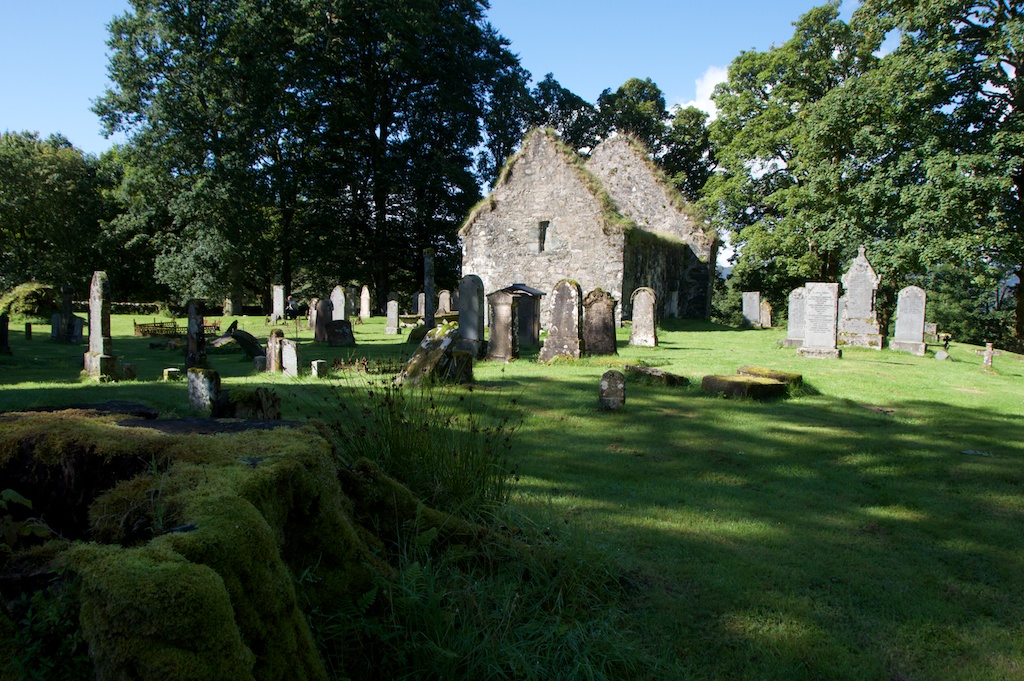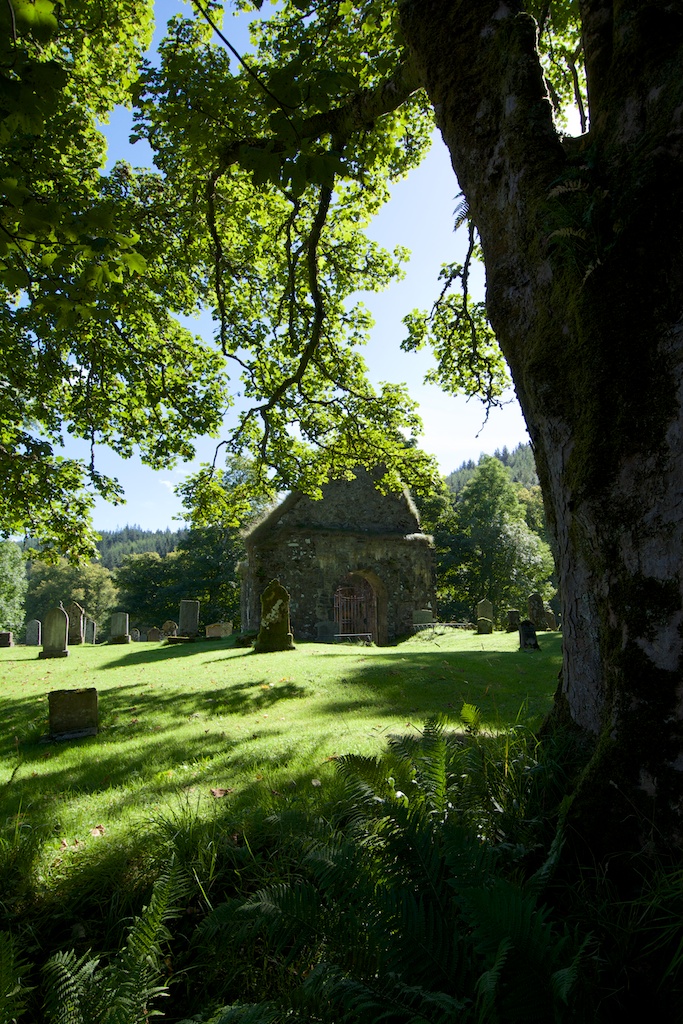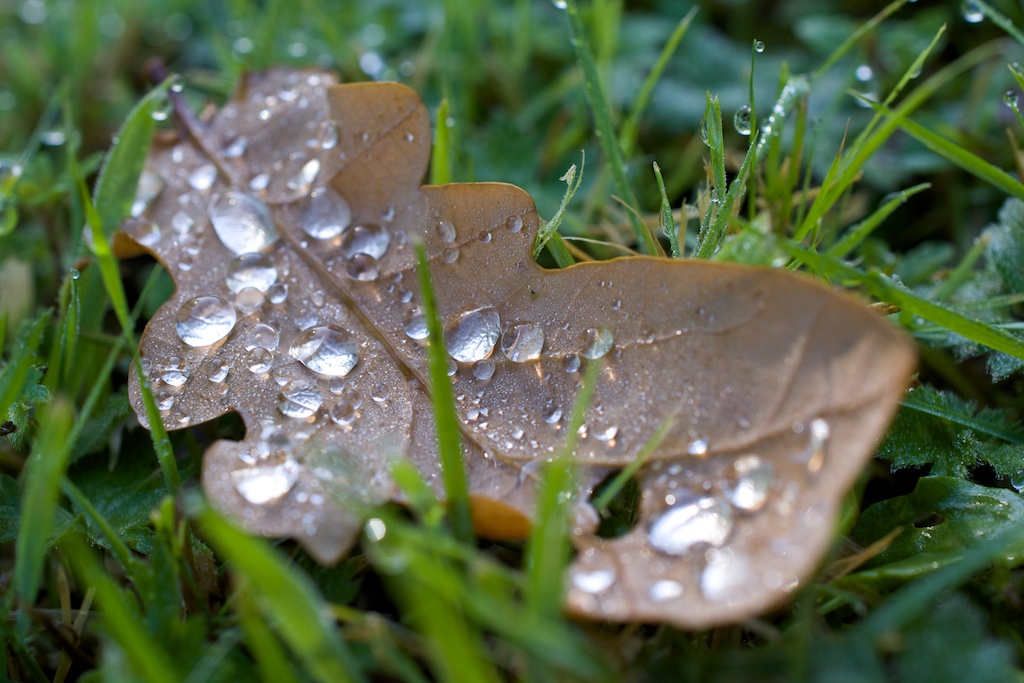
Kilmorie Chapel by Loch Fyne
One of the tallest ash trees I’ve seen hangs its branches over the graveyard of Kilmorie Chapel. The leaves whisper as they scatter the sunlight into a thousand fragments, and the grass beneath is wet with dew.
This quiet haven on the east shore of Loch Fyne is the traditional burial place of the Maclachlans, and has been so for many hundreds of years. A sign outside the graveyard says:
“All its chiefs over at least 600 years are buried here apart from three. One, Lachlan Maclachlan, lies at the battlefield of Culloden where he died in 1746… Buried just outside the chapel is Madam Marjorie Maclachlan of Maclachlan (1920-1996), 24th Chief and the only woman ever to lead the clan.”

The Maclachlans trace their ancestry back to a man named Lachlan Mor, a 13th century chieftain, and through him to Anrothan O’Neill, an Irish prince of the 11th century. It is said that the line extends back another 600 years to Niall Noígíallach, ‘Niall of the Nine Hostages’, a High King of Ireland who seems to be part man, part legend. The lands owned by the Maclachlans around the shore of Loch Fyne came to be called Strathlachlan, the ‘valley of Lachlan’.
Old Castle Lachlan: The first Maclachlan stronghold was built on a low craggy outcrop that juts into the loch, a short walk from the chapel. This is ‘Old’ Castle Lachlan, ivy-covered and crumbling and magnificent. The ‘New’ Castle, framed by mature trees and standing a little further inland, dates from the late 1700s and is the home of the present Clan Chief.
There’s not an awful lot left of Kilmorie Chapel, but you have to admit that it’s still ridiculously pretty. Finding an accurate date for it is surprisingly difficult, but its dedication is thought to come from St Maelrubha, an early Irish saint who lived in the 7th and early 8th centuries AD. St Maelrubha also gave his name to the beautiful little chapel of Kilmory Knap on Loch Sween.
This doesn’t mean that the existing structure is that old, however. A church is said to have been here at the time of the Crusades, although there is no written record of it before 1543. But the graveyard is circular, which is usually a sign of an early Christian church. A few yards down the road, a ‘wishing well’ – possibly an old holy well, catching the water of a hillside burn – is another sign that you could be walking in the footsteps of an early saint.
The church once extended further to the west, meaning that it had a longer nave, but this part is long gone. The archway that now forms the west entrance is blocked off by railings, but there seems to be little to see inside, apart from a few memorials placed there in more recent centuries. The 24th Maclachlan Chief, Marjorie Maclachlan (1926-1996) and her husband, George Stiles Rome, are buried on either side of the entrance.
In recent years Kilmorie Chapel had become so fragile that it was threatening to collapse, but crucial help came from The Lachlan Trust which raised enough money to fund a programme of conservation work.
To the east, a tall slim column of stone is unmistakably an early cross-shaft, its head broken and now sporting generous tufts of lichen. I believe a fragment of the cross-head is kept in the church nearby. Wandering around, you notice some lovely old gravestone carvings, into which moss is gradually running its velvety fingers. Huge tree stumps, carpeted in softest green, attest to a long history of majestic trees on this site.
The strath, now deeply peaceful, would have been a little hive of activity when the Old Castle was inhabited, with a small cluster of village buildings around the chapel.
A path from the graveyard leads you towards Old Castle Lachlan, through a meadow and along a boardwalk that spans the river. Loch Fyne, one of Argyll’s longest sea lochs, stretches away into the distance. This is a more sheltered spot than Knapdale, further west, where the trees hug the hillside and bend away from the Atlantic gales.
Castle Lachlan was built for a purpose, which was to defend and to dominate, and there are a couple of ghostly tales about it as well. You can read it about it in this feature on The Hazel Tree.
Photos copyright © Jo Woolf


















17 Comments
McFadzean
You always manage to find little gems tucked away in the back of beyond, Jo.
Cheers, Alen
Jo Woolf
I know, Alen, they just pop up into my path! This one was a surprise, as we’d never been down that side of Loch Fyne before. Lovely drive.
montucky
What a beautiful place and so rich with history!
Jo Woolf
Aah, I know, I feel as if I’m walking on history everywhere! This part of Argyll is lovely – it was new to us, and a joy to explore. I’m always amazed at how much of Scotland there is.
Fife Photos and Art
What a wonderful place Jo, and some stunning photos to really set off your fascinating post!! One of these days we are going to make it over to the West Coast, there is so much to see on that side of Scotland! 🙂
Jo Woolf
Thank you, Andy! I know, what a lovely little place, and in such a wonderful spot. A joy to find. There’s just SO much of the west coast, it’s unbelievable. I love it all! 🙂
Jean
Jo, You make my heart yearn! I read all your posts, over here in the far west (Ha, America). I want to be there walking with you and listening to you explain history to me (a poor subject of mine). It happens that my first grandson was given the beautiful name Lachlan as a middle name in honor of his Scottish heritage, so this piece was especially touching. Know that I miss you all, and your beautiful homeland. Jean
Jo Woolf
Ahh, wish you could, Jean! Lachlan is a lovely name, and Strathlachlan is an equally beautiful place. We miss you too! 🙂 Met up with Moira just recently and went to see the Celts exhibition in Edinburgh – fabulous.
blosslyn
Lovely Jo, a new place to visit, we have only been down one side of Loch Fyne, so we will have to explore next May. Great photos and history. I was just wondering if you can see the castle from the other side of the Loch, as I took a photo of a ruin last year, but it didn’t come out very well 🙂
Jo Woolf
Thanks, Lynne! Yes, you would love the drive down Loch Fyne and the road that goes over the top towards Dunoon is spectacular – awesome views down to the Kyles of Bute. Not sure if you can see the castle from the west shore but I don’t see why not. You’d be looking directly across at it just south of Minard.
blosslyn
Thanks Jo, its on the list now, for things to do in 2017, oh my the years come round fast 🙂
Evelyn Rome
Are the partners of the chiefs buried with them.. i have been looking into my ancestry and george rome who married the 24th chief was my 3rd cousin 1 removed…
Jo Woolf
That’s very interesting, Evelyn! I am afraid I can’t answer that for sure, although if someone else knows the answer they are welcome to leave a comment.
Alasdair Maclauchlan
Yes Evelyn, George Rome is buried next to his wife Marjorie chapel, their graves are on either side of the entrance to the chapel
Jo Woolf
Thank you for the confirmation.
Dennis Gilliam
The year 2021 here from Iowa USA! Just found your beautiful pictures and fetching post. My wife (a descendant of MacLachlan) and I (a descendant of McLean) toured the west of Scotland and the Isle of Mull about 10 years ago, and found this castle stunning then. Although we are glad to see the improvements being made to restore and make safe the castle et al, it was truly lovely to see it in its original state back then. Would love to see it again! It truly is a site for the eyes. Thank you for this wonderful journey back in time…
Jo Woolf
Great to hear from you, Dennis! I’m very glad you enjoyed the post. Lovely to hear about your MacLachlan and MacLean connections. You must have had a fascinating tour! Yes, Castle Lachlan is still very striking and it must have been extremely impressive in its day. And Kilmorie Chapel is beautiful – we visited it again one February when it was carpeted with snowdrops. Would your wife’s connection be with the MacLeans of Duart? I’m trying to think of other stories that might interest you. A ruined mill at Kilmory Oib, near Tayvallich, has a MacLean connection: https://thehazeltree.co.uk/2018/08/25/the-dark-mill-of-coilebar/ Best wishes, Jo